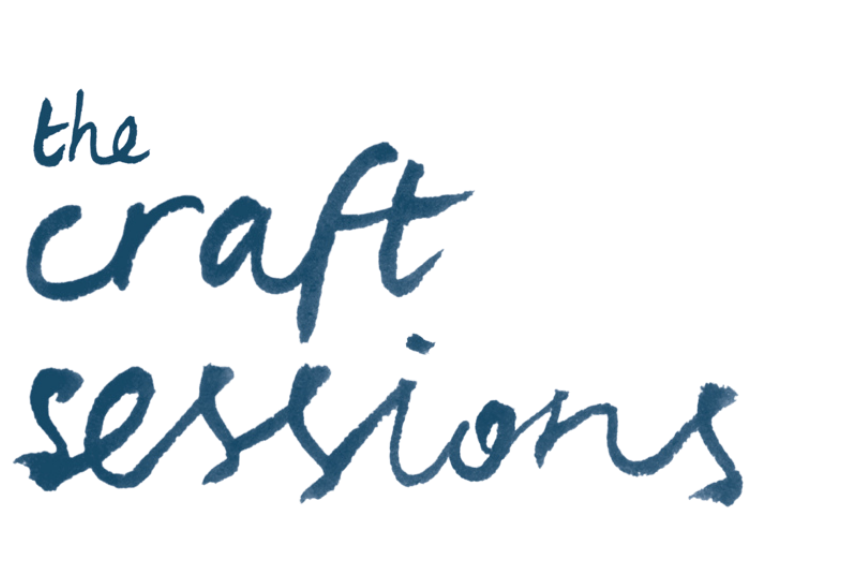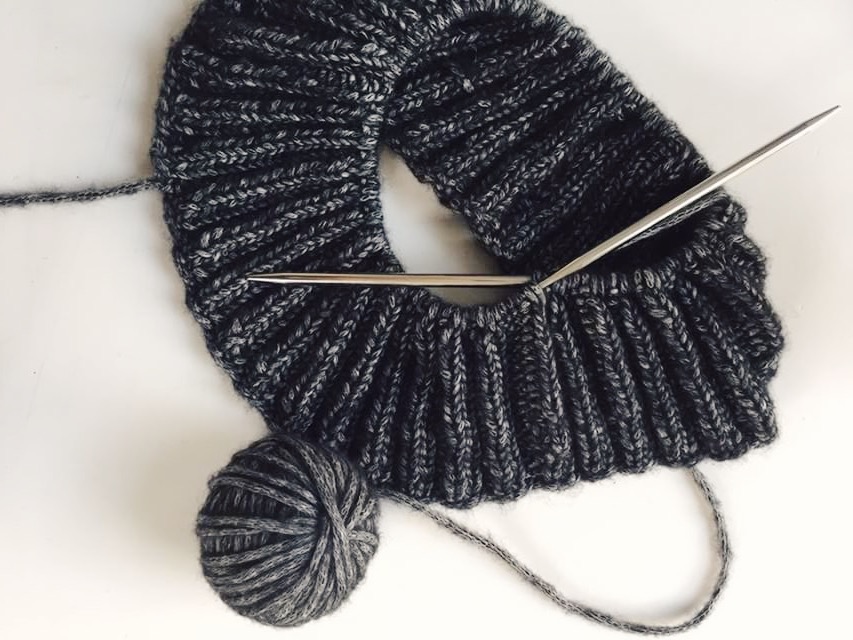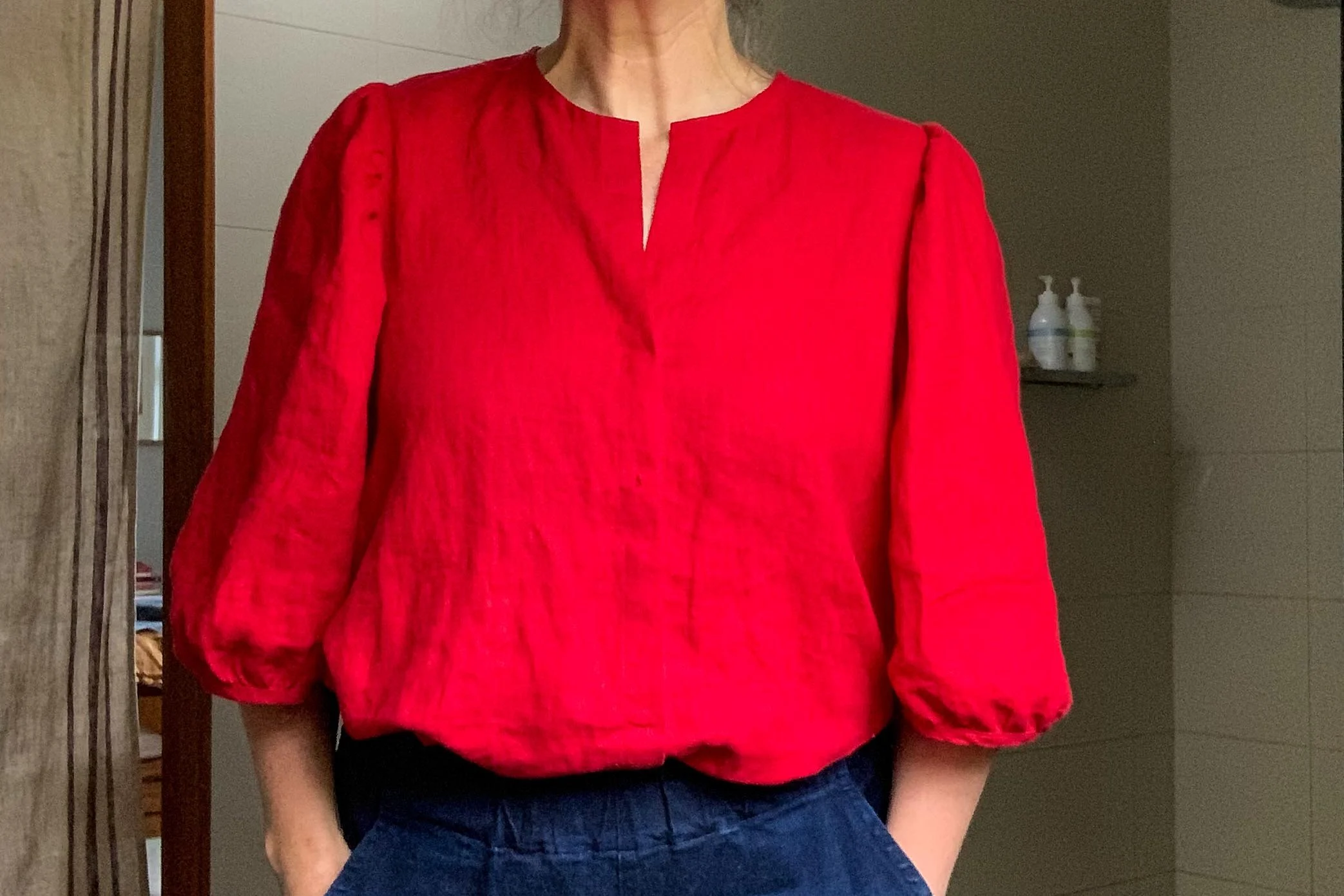A few months ago I taught my lovely babysitter Steph to knit. She and I had talked about a few times over the years, and when I heard she was jetting off yet again, I finally got organised to get her started.
I went to the store and purchased her three skeins of Woolfolk Luft in the Black L06 colourway and a set of circular 60cm Addi Turbos. I know that sounds a little extravagant for a first project but a. Steph is ace and b. making is a sensual experience. Making something is all about the senses - we feel knitting in our bodies - and if we don't enjoy the sensations of knitting when we begin then why would we continue to knit? I wanted to make her first knitting experience a joyous one - one that would result in a beautiful product, and make her happy - so I purchased some of the most delicious yarn I could find.
I've talked many times about how materials matter and I passionately believe it to be true, especially when you are new to the sport. Now obviously, Woolfolk Luft is taking good materials to the extreme, and not all new knitters need to start with Woolfolk ;), but in this case I wanted to thank her with something special.
So, as Steph was looking after my smalls for one last time, I asked her to come 30min early so I could teach her before we had to head out the door. I'd already got the cowl started for her by casting on, and knitting the first row of the Purl Soho Lovely Ribbed Cowl - which I believe is the perfect newbie project! We had 20 minutes to chat all things knitting.
And here we get to the opinionated point of the blog post!
Teaching Steph to knit reminded me that I have always meant to post about what I believe the perfect project for beginners actually is - in my opinion. And I keep forgetting!
You see, I believe that a lot of beginner knitters start with the wrong type of stitch pattern. And that worries me. It worries me because maybe they won't stick with knitting because they think it is too hard, or maybe they will get confused and think it is stressful. And people need knitting, and the world needs more knitters. Knitting brings so much joy to the universe.
Beginner knitters are often encouraged to start with garter stitch - and they often get flumoxed. Which makes sense - as garter gives you no indication if you are getting your knitting right or wrong as you can't tell. Garter stitch is a red hot mess to look at, especially if you are new and you don't understand how it works. Initially looking at garter is like looking at a plate of spaghetti and trying to find a pattern in it.
If they are lucky, some beginner knitters will be encouraged to start with stockinette stitch - which I still don't like - but it's an improvement on starting with garter.
Stockinette is simpler to look at and understand, which means that some folks will be able to see if they have made a mistake, but it doesn't teach you to recognise the stitch you have on the needles - as you are repeating whole rows of one stitch then the other stitch, paying little attention to what you are doing. Stockinette also feels like a waste of an opportunity to learn about reading your knitting from the very start - especially as you would have needed to learn both a purl stitch and a knit stitch.
My hypothesis: Rib is the perfect stitch pattern to begin your knitting career with, as it teaches you to read your knitting from the start.
I believe that the perfect beginner knitting project is some form of 2x2 or 3x3 rib. Through knitting rib you learn that there is a V at the front of a stitch and a purl bump at the back! It is simple, repetitive and beautiful. And by learning the structure of our knitting from the getgo then we knit with less fear and we are more confident knitters.
A few years ago I wrote a post called The Secret To Becoming A Great Knitter and it was all about learning to read your knitting, about understanding your stitches and what they looked like - for freedom, and for joy. In that post I describe how to understand your stitches and how to read them; what they look like and how to recognise them.
Reading your knitting is something you can learn from the very start of your knitting career, as Steph has just proved.
Steph had her 20 min lesson before she started her evening's babysitting, and then we went out for a couple of hours. She had knitted till we got home, then we talked about where she was at. She did take a little film of me demonstrating a knit stitch and a purl stitch, which she took with her on the plane in case she forgot, but that was her whole lesson. About 30 min total.
Fast forward a couple of months and she has a cowl. A beautiful usable wearable cowl.
Photo she sent me via an insta story! xx
This cowl gave Steph repetitive practice of the two basic stitches in knitting. She watched, and tried to learn what they look like, and she was successful. Look at that pretty cowl. No counting, no keeping track.
A simple clean rib shows the newbie knitter what stitch is what. There is a simplicity and grace to it that builds confidence.
People teach garter to newbies as they believe that it's simpler - I believe this is based on the idea that the person only has to learn the knit stitch, and not a purl. Which makes sense, but it is a false economy. Garter is confusing to look at - one row sits on top of the other disguising the stitches. Many experienced knitters can't fix mistakes in garter as it is such a hullabaloo of a stitch pattern.
Yes, learning rib will mean they will have to learn two stitches rather than one, but actually a knit and a purl are incredibly similar in their form, so it's not difficult to learn both. In each case you simply insert the needle tip, you wrap your yarn anti-clockwise through the middle of your two needles, and then you pull your needletip through and pop the stitch off. The only difference between a knit and a purl is whether you insert your needletip from the left or the right. With a bit of practice and concentration it isn't much harder to understand two stitches rather than one*.
If we pay a bit of attention, rib gives us a basic understanding of what a knit stitch looks like on your needles, and what a purl stitch looks like on your needles. By the end of knitting the cowl you know that the front of the stitch looks like (a V) and what the back of the stitch looks like (a bump). Knitting then makes sense, as do the two basic stitches.
This is why I love rib stitch for beginners so much. Steph had so much confidence that she was off to the shop to buy yarn for a TCS Simple Hat. She is almost done already and is waxing lyrical about the joys of knitting. We have another convert!
I'd love to hear about your early knitting experiences and whether this approach would have been helpful?
And if you want to learn to knit, buy some beautiful materials and try this cowl. It is a total winner.
Felicia x
* I have one exception to the rule of teaching rib to newbies and that would be for small people. Small people don't necessarily have the capacity to pay enough attention. Instead with small people, my preference when teaching is to use circular needles and get them to knit a hat in the round..... I'm happy to finish off the top, or instead you can do a square top which kinda make ears. They love the ears.




